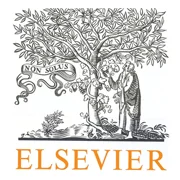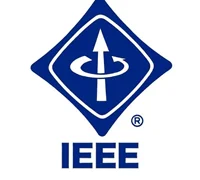دانلود ترجمه مقاله فضای کار ربات PUMA 560 با کنترل کننده معکوس ANFIS
| عنوان فارسی |
فضای کار ربات PUMA 560 با کنترل کننده معکوس ANFIS با مچ کروی |
| عنوان انگلیسی |
ANFIS-Inverse-Controlled PUMA 560 Workspace Robot with Spherical Wrist |
| کلمات کلیدی : |
سیستم استنتاج عصبی فازی سازگار (ANFIS)؛ قابلیت اطمینان مجازی (VR)؛ PUMA 560 |
| درسهای مرتبط | مهندسی مکانیک |
| تعداد صفحات مقاله انگلیسی : 10 | نشریه : ELSEVIER |
| سال انتشار : 2012 | تعداد رفرنس مقاله : 23 |
| فرمت مقاله انگلیسی : PDF | نوع مقاله : ISI |
|
پاورپوینت :
ندارد سفارش پاورپوینت این مقاله |
وضعیت ترجمه مقاله : انجام شده و با خرید بسته می توانید فایل ترجمه را دانلود کنید |
1. مقدمه 2. شناساگر فازی عصبی سازگار 3. مطالعه موردی 4. مدل سازی طرح در VR 5. طراحی کنترل کننده ANFVIS معکوس 6. نتیجه گیری

چکیده – در اینجا ساختار شناختی برای ایجاد پروفایل حرکت در ربات PUMA 560 دارای مچ کروی بکار رفته است. سیستم استنتاج عصبی-فازی سازگار (ANFIS) بکار رفت و وضعیت و خظ سیر ربات در واقعیت مجازی (VR) اجرا شد. هدف از این طراحی ایجاد حرکات پیچیده با استفاده از فازهای دوگانه ANFIS بود: یک، حل مسئله سینماتیک معکوس (IKP) با شناساگر ANFIS، برای موقعیت و جهت-گیری عملگر نهایی با مچ 3-DOF (شناساگر توانایی محاسبه و دقت بالایی در حل IKP فراهم می کند)، دو، پیاده کردن کنترل کننده معکوس ANFIS برای همه زوایایی مفصل ربات. VR حرکات کوتاه ربات را با استفاده از دینامیک روبه جلو در کنترل کننده پیاده کرد. IKP تعیین مجموعه ای از زوایای مفصل برای رسیدن به دستور معین برای وضعیت قرارگیری منیپولیتور بررسی شده است. شبیه سازی طرح با اتصال محیط VR به Simulink/MATLAB Ver. 2012a انجام گرفت. حرکات منیپولیتور با سینماتیک روبه جلو و معکوس پیاده شد. نتایج دامنه وضعیت قرارگیری و خط سیر ربات را تایید کرد. مقدمه: ربات یک سری اتصالات سخت دارد که بوسیله مفاصل دورانی یا کشویی (پریزماتیک) به هم متصل می شوند. مفصل دورانی حول محور حرکتی می چرخد، در صورتیکه مفصل کشویی در امتداد این محور می لغزد. محل هر مفصل نسبت به مفصل مجاور مشخص می شود. اتصال مفاصل متوالی با ماتریس تبدیل همسان 4×4 توصیف می شود که جهت گیری و موقعیت منیپولتور را دربرمی گیرد. درجه آزادی منیپولتور (DOF) با تعداد ماتریس تبدیل تنظیم می شود: با ضرب ماتریس ها، موقعیت و جهت گیری نهایی منیپولتور بدست می آید. مختصات مفصل شامل کارهای کنترل است، در صورتیکه مختصات دکارتی حرکات منیپولتور را مشخص می کند. تبدیل موقعیت و جهت گیری عملگر نهایی از فضای دکارتی به فضای مفصل مسئله سینماتیک معکوس و مسئله ای اساسی برای محاسبه زوایای مطلوب مفصل در طراحی و کنترل منیپولتور است [3-1].
Cognitive architecture is used here to create a portfolio of movement in a spherical-wristed PUMA 560 robot. Adaptive Neuro-Fuzzy Inference System (ANFIS) was used, and the robot's postures and trajectories were executed in Virtual Reality (VR). The design aims to enable complex movements through use of the dual phases of ANFIS: one, solution by Inverse Kinematic Problem (IKP) with ANFIS identifier, for the end-effector's position and orientation as allowed by the 3-DOF wrist (the identifier offers high computation and accuracy of the IKP solution), two, implementing an inverse-ANFIS controller for all the robot's joint angles. VR implemented the robot's movements through the controller's use of forward dynamics. The IKP of determining a set of joint angles to achieve a given command for the manipulator's postures is addressed. The design's simulation was enabled by connecting the VR environment with Simulink/MATLAB Ver. 2012a. Forward and inverse kinematics implemented the manipulator's movements. Results validated the robot's range of possible postures and trajectories. Introduction: A robot has a series of rigid links joined by revolute or prismatic joints. A revolute joint rotates about, whereas a prismatic joint slides along, a motion axis. The location of any of the joints is usually relative to a neighbouring joint. Linking of successive joints is described by 4x4 homogeneous transformation matrices containing the manipulator’s orientation and position. The manipulator’s degree of freedom (DOF) is set by the number of transformation matrices; multiplying the matrices gives the manipulator’s final position and orientation. Joint coordinates contain the control actions, whereas Cartesian coordinates specify the manipulator motions. Converting the manipulator’s end-effector position and orientation from Cartesian space to joint space is an inverse kinematics problem and fundamental to calculating the desired joint angles in manipulator design and control [1-3].
بخشی از ترجمه مقاله (صفحه 11 فایل ورد ترجمه)
محتوی بسته دانلودی:
PDF مقاله انگلیسی ورد (WORD) ترجمه مقاله به صورت کاملا مرتب (ترجمه شکل ها و جداول به صورت کاملا مرتب)



دیدگاهها
هیچ دیدگاهی برای این محصول نوشته نشده است.